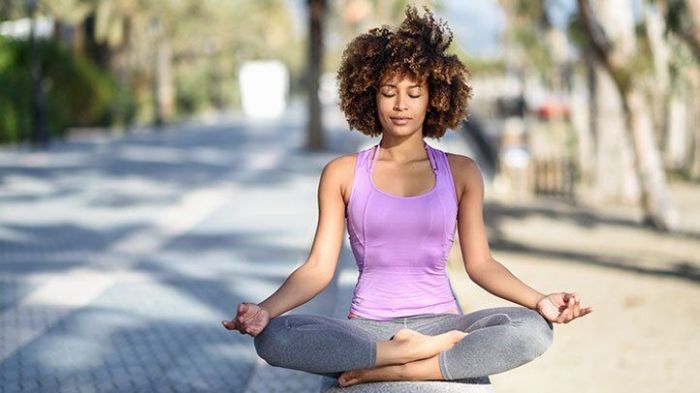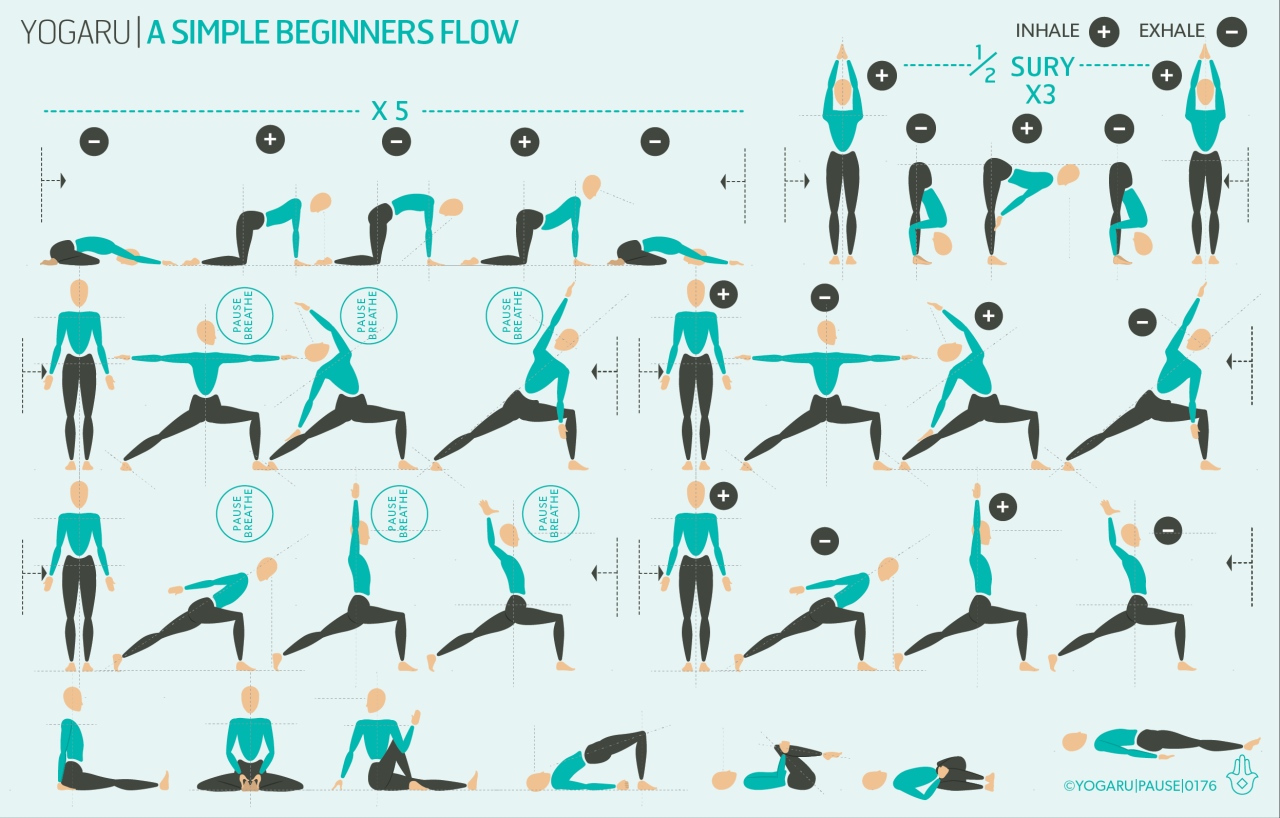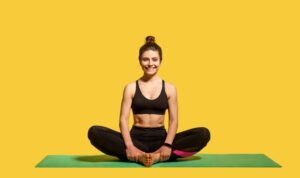Yoga for Beginners sets the foundation for a powerful journey into the world of yoga, offering insights into its benefits, essential poses, breathing techniques, and tips for starting a practice. Get ready to embark on a transformative fitness experience!
Introduction to Yoga for Beginners
Yoga is a fantastic practice for beginners as it offers a wide range of physical, mental, and emotional benefits. It helps improve flexibility, strength, balance, and posture while reducing stress and promoting relaxation.
Benefits of Yoga for Beginners
- Enhances flexibility and range of motion
- Builds strength in various muscle groups
- Improves balance and coordination
- Reduces stress and anxiety levels
- Promotes relaxation and better sleep
Basic Principles of Yoga Practice for Beginners
- Focus on proper breathing techniques (pranayama)
- Start with simple poses and gradually progress
- Listen to your body and avoid pushing yourself too hard
- Stay consistent with your practice for best results
- Practice mindfulness and stay present during your yoga sessions
Importance of Starting Yoga as a Beginner
Yoga is a journey that begins with the first step. Starting as a beginner allows you to build a strong foundation, learn proper techniques, and gradually advance at your own pace. It sets the stage for a lifelong practice that can bring lasting health and wellness benefits.
Essential Yoga Poses for Beginners

Yoga poses are a fundamental aspect of any yoga practice, especially for beginners. They help in building strength, flexibility, and overall body awareness. Here are some beginner-friendly yoga poses along with their benefits and correct alignment:
1. Mountain Pose (Tadasana)
- Strengthens the legs, core, and improves posture.
- Stand tall with feet hip-width apart, arms by the sides, and palms facing forward.
- Engage the thighs, lengthen the spine, and relax the shoulders down.
2. Downward Facing Dog (Adho Mukha Svanasana)
- Stretches the hamstrings, calves, and shoulders while strengthening the arms and legs.
- Start on your hands and knees, lift the hips up and back, forming an inverted V-shape.
- Press the hands into the mat, engage the core, and relax the neck.
3. Warrior II (Virabhadrasana II), Yoga for Beginners
- Builds strength in the legs, opens the hips, and improves balance.
- Step the feet wide apart, bend the front knee over the ankle, and extend the arms parallel to the floor.
- Gaze over the front fingertips, square the hips, and press the outer edge of the back foot into the mat.
4. Child’s Pose (Balasana)
- Relieves stress, stretches the back, hips, and thighs, and promotes relaxation.
- Kneel on the mat, sit back on the heels, and fold forward, reaching the arms out in front.
- Rest the forehead on the mat, relax the shoulders, and breathe deeply.
Breathing Techniques in Yoga for Beginners

Breath awareness is a fundamental aspect of yoga practice as it helps connect the mind and body, promoting relaxation and focus. Proper breathing techniques can enhance the benefits of yoga poses and improve overall well-being.
Common Pranayama Techniques for Beginners
- Kapalabhati: Also known as the skull shining breath, this technique involves forceful exhalations followed by passive inhalations. It helps cleanse the respiratory system and energize the body.
- Dirga Pranayama: This three-part breath technique focuses on deep inhalations that expand the belly, ribcage, and chest. It promotes relaxation and increases oxygen flow in the body.
- Ujjayi Pranayama: Known as the victorious breath, this technique involves breathing through the nose with a slight constriction in the throat, creating a whispering sound. It helps calm the mind and build heat in the body.
Importance of Proper Breathing in Yoga
Proper breathing enhances the yoga practice by providing a steady flow of oxygen to the muscles, improving endurance and concentration. It also helps release tension and stress, allowing for a deeper connection between the mind and body during yoga sessions.
Tips for Starting a Yoga Practice: Yoga For Beginners
Starting a yoga practice can be both exciting and challenging for beginners. Here are some tips to help you kickstart your journey into the world of yoga:
Choosing the Right Yoga Style for Beginners
When starting your yoga practice, it’s important to choose a style that suits your fitness level and goals. For beginners, Hatha yoga or Vinyasa flow yoga are great options as they focus on basic poses and breathing techniques. These styles are gentle yet effective in building strength, flexibility, and mindfulness.
Creating a Consistent Yoga Routine
Consistency is key when it comes to yoga practice. To create a consistent routine, try to set aside a specific time each day for your practice. Whether it’s early morning or before bedtime, find a time that works best for you and stick to it. Additionally, start with shorter sessions and gradually increase the duration as you build stamina and confidence.
Staying Motivated and Overcoming Challenges
As a beginner, it’s normal to face challenges and feel demotivated at times. To stay motivated, set realistic goals for your practice and celebrate small victories along the way. Surround yourself with a supportive community or find a yoga buddy to keep you accountable. Remember that progress takes time, so be patient with yourself and embrace the journey.

